Welcome to our free classical music site

Do you write about classical music? Are you a blogger? Want to team up with Classical Connect? Send us a message, let's talk!

Do you write about classical music? Are you a blogger? Want to team up with Classical Connect? Send us a message, let's talk!
This Week in Classical Music: November 7, 2022. Brief Italian entry 2. We’re still under the Italian spell, but this week it’s harder to maintain the Italian theme: we have only one Italian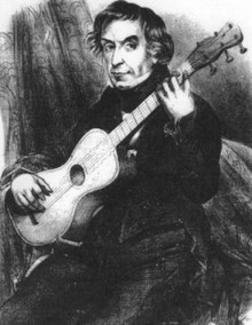 composer, and, unfortunately, rather mediocre – Luigi Legnani, born on November 7th of 1790 in Ferrara. He started as a tenor but switched to playing the guitar when he was almost 30. He turned out to be very good at that: after making a name for himself in Italy, he went to Vienna in 1822 and performed there to great acclaim. Critics calling him a worthy successor to Mauro Giuliani, another Italian, a virtuoso guitar player and composer, who spent many years in Vienna, built a highly successful career and made friends with Beethoven, Rossini and members of the Imperial court. Legnani toured many European countries and at some point, met Paganini, himself an excellent guitar player. They became friendly and even planned a concert together but at the last moment Paganini got sick. Legnani composed about 250 works, most of them for the guitar. Later in life he settled in Ravenna where he built fine guitars and violins. Here is Luigi Legnani's Capriccio no. 28, op. 20, played by the Italian guitarist Federica Canta.
composer, and, unfortunately, rather mediocre – Luigi Legnani, born on November 7th of 1790 in Ferrara. He started as a tenor but switched to playing the guitar when he was almost 30. He turned out to be very good at that: after making a name for himself in Italy, he went to Vienna in 1822 and performed there to great acclaim. Critics calling him a worthy successor to Mauro Giuliani, another Italian, a virtuoso guitar player and composer, who spent many years in Vienna, built a highly successful career and made friends with Beethoven, Rossini and members of the Imperial court. Legnani toured many European countries and at some point, met Paganini, himself an excellent guitar player. They became friendly and even planned a concert together but at the last moment Paganini got sick. Legnani composed about 250 works, most of them for the guitar. Later in life he settled in Ravenna where he built fine guitars and violins. Here is Luigi Legnani's Capriccio no. 28, op. 20, played by the Italian guitarist Federica Canta.
Our second Italian, Giuseppe Sinopoli, was a very talented (and unorthodox) conductor and composer. Born on November 2nd of 1946 in Venice, he studied with Bruno Maderna, one of most prominent Italian modernist composers, and later with Karlheinz Stockhausen in Darmstadt. In 1975 Sinopoli formed the Bruno Maderna Ensemble to perform contemporary music; in 1978 he conducted his first opera, Aida, in Venice. During that period, he composed an opera, Lou Salomé, which was staged in Munich in 1981. He later dropped composing and devoted himself to conducting. Sinopoli’s career developed rapidly: in 1983 he became the Chief conductor of the Academy of Santa Cecilia in Rome, went on to conduct the New York Philharmonic and Philharmonia Orchestra from London, worked at the Bayreuth Festival. In 1990 he was appointed to the prestigious position of music director at the Berlin Deutsche Oper but didn’t take it, moving instead to Dresden’s Staatskapelle as their principal conductor. Sinopoli died on April 20th of 2001 of a heart attack while conducting the third act of Aida at the Deutsche Oper. Here’s Giuseppe Sinopoli conducting the Staatskapelle Dresden orchestra in the first movement of Bruckner’s Symphony no. 5.Permalink
This Week in Classical Music: October 31, 2022. Brief Italian entry 1. A short hiatus with Italian flavor calls for an Italian theme for this week’s entry, and history, so rich on Italian music,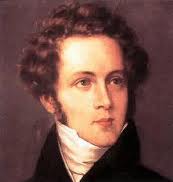 obliges. Vincenzo Bellini, the creator of La sonnambula, Norma, and I puritani, was born on November 3rd of 1801 in Catania, Sicily. Just last week we wrote about the great soprano sfogato Giuditta Pasta: she sung at the premier performances of two of these operas, as Anna in La sonnambula, in Milan’s Teatro Carcano, in March of 1831, and in December of the same year, the role of Norma, also in Milan but in Teatro alla Scala. Bellini was 33 when he died of dysentery. His first opera was written when he was 23, still a student at the Naples San Sebastiano Conservatory – Bellini had only ten creative years but still left us some of the most memorable bel canto operas.
obliges. Vincenzo Bellini, the creator of La sonnambula, Norma, and I puritani, was born on November 3rd of 1801 in Catania, Sicily. Just last week we wrote about the great soprano sfogato Giuditta Pasta: she sung at the premier performances of two of these operas, as Anna in La sonnambula, in Milan’s Teatro Carcano, in March of 1831, and in December of the same year, the role of Norma, also in Milan but in Teatro alla Scala. Bellini was 33 when he died of dysentery. His first opera was written when he was 23, still a student at the Naples San Sebastiano Conservatory – Bellini had only ten creative years but still left us some of the most memorable bel canto operas.
And also this week, two historical Italian singers were born: the great castrato Senesino, on October 31st of 1686, and Tarquinia Molza on November 1st of 1542. Senesino, an Italian alto castrato, born Francesco Bernardi in Siena (thus Senesino), was one of Handel’s favorite singers. He came to London in 1720, became enormously popular and was paid equally enormous fees (after leaving London, he built a fancy house in Siena, which carried an inscription: “the folly of the English had laid the foundation of it.” Senesino sung in 20 Handel operas, of which 17 were written for his voice; his performance in Giulio Cesare was called “beyond all criticism.” Here, from a 2012 Salzburg production of Giulio is Andreas Scholl, the German countertenor, as Cesar, singing the aria Va tacito e nascosto (Silently and stealthily). This, alas, is only an approximation of Senesino’s voice. And from the same production, here’s Cleopatra’s aria E pur così in un giorno (And even so in a day) sung by Cecilia Bartoli. We suspect that she’s not worse than the famous Fancesca Cuzzoni who premiered the role in February of 1724.
Tarquinia Molza was an extraordinary woman: a brilliant singer, a virtuoso player on bass viol in a style called “viola bastarda,” and poet. She was born in Modena and around 1583, already a widow, moved to Ferrara, one of the musical centers of Italy, as a lady-in-waiting to the Duchess Margherita Gonzaga d’Este. In Ferrara she served as an advisor to the famous Concerto delle donne, of which we’ve written several times, for example, here. While at the court, she had a tryst with the composer Giaches De Wert, deemed inappropriate (she was a minor nobility while composers were considered of a serving class) and had to leave Ferrara. She moved to Rome and died there in 1617.Permalink
This Week in Classical Music: October 24, 2022. Brief entry: Scarlatti and Pasta. Domenico Scarlatti, a son of Alessandro , was born on October 26th of 1685, the year that also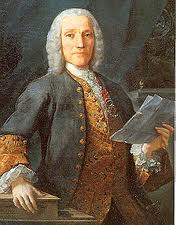 gave us Johann Sebastian Bach and George Frideric Handel. Domenico’s piano sonatas are as popular as ever, though out of the 555 that he had written during his lifetime in Italy and Spain, only a few are played often, while most of them remain unknown. Several pianists and harpsichordists, on the other hand, have recorded all of Scarlatti’s sonatas; Scott Ross, who was the first one to record the complete set in 1985. The British keyboardist Richard Lester also recorded all of them and the Italian pianist Carlo Grante is in a middle of his Scarlatti project, he’s playing them on a Bösendorfer piano. Here, almost randomly is Ivo Pogorelić playing Sonata in G minor, K. 450.
gave us Johann Sebastian Bach and George Frideric Handel. Domenico’s piano sonatas are as popular as ever, though out of the 555 that he had written during his lifetime in Italy and Spain, only a few are played often, while most of them remain unknown. Several pianists and harpsichordists, on the other hand, have recorded all of Scarlatti’s sonatas; Scott Ross, who was the first one to record the complete set in 1985. The British keyboardist Richard Lester also recorded all of them and the Italian pianist Carlo Grante is in a middle of his Scarlatti project, he’s playing them on a Bösendorfer piano. Here, almost randomly is Ivo Pogorelić playing Sonata in G minor, K. 450.
Luciano Berio, one of the most interesting composers of the second half of the 20th century, was born on October 24th of 1925. And Georges Bizet was also born this week, on October 25th of 1838..jpg)
One somewhat unusual anniversary: Giuditta Pasta. Pasta, born on October 26th of 1797 near Milan, was one of the greatest voices of the early 19th century. Based on the descriptions of her contemporaries, she was a real “soprano sfogato”. Sfogato, a rare voice, has a very large range, from mezzo, or even contralto, to the coloratura soprano. Many of the soprano sfogato roles were written by the bel canto composers of the 19th century, Rossini, Donizetti and Bellini. Maria Callas may be considered a soprano sfogato: she sung mezzo roles, such as Carmen, Rosina and Cenerentola, and also Norma, Lucia de Lammermoor and Anna Bolena, which require a very high tessitura, reaching the E above the high C. Three famous roles were created specifically for Giuditta Pasta: Donizetti's Anna Bolena, which she premiered in 1830, Amina in Bellini's La sonnambula and Norma in Bellini’s opera, both of which she sung in 1831. In the absence of the recordings of Pasta’s voice, here’s Maria Callas in the Mad scene (Il dolce suona) from Lucia de Lammermoor, in a 1953 recording.
Pasta performed in all major opera houses of Europe and also visited St-Petersburg: the portrait, above, by the Russian painter Karl (Kirill) Bryullov, was made there in 1830.Permalink
This Week in Classical Music: October 17, 2022. Liszt, Solti and more. Of all the composers and musicians born this week, Franz Liszt is by far the most important. A great composer and,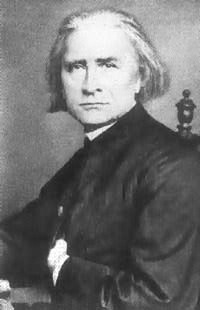 judging by the numerous ecstatic reviews left by his contemporaries, an even greater pianist, Liszt was born on October 22nd of 1811 in a small Hungarian village next to the border with Austria, both countries back then part of the Austrian Empire. We’ve written about Liszt many time and also published short articles on his piano cycle, Années de pèlerinage: Year One, Switzerland (Première année: Suisse), here, and Year Two, Italy (Deuxième année: Italie) here and Year Three, named just Troisième Année, here. Our library has about 250 different performances of Liszt’s works, many by young talented musicians, you can browse it here. Listen, for example, how 18-year-old Daniil Trifonov plays, live in concert, Liszt’s transcription of Schubert’s song Die Forelle.
judging by the numerous ecstatic reviews left by his contemporaries, an even greater pianist, Liszt was born on October 22nd of 1811 in a small Hungarian village next to the border with Austria, both countries back then part of the Austrian Empire. We’ve written about Liszt many time and also published short articles on his piano cycle, Années de pèlerinage: Year One, Switzerland (Première année: Suisse), here, and Year Two, Italy (Deuxième année: Italie) here and Year Three, named just Troisième Année, here. Our library has about 250 different performances of Liszt’s works, many by young talented musicians, you can browse it here. Listen, for example, how 18-year-old Daniil Trifonov plays, live in concert, Liszt’s transcription of Schubert’s song Die Forelle.
Luca Marenzio, a fine composer of late Renaissance, was born on October 18th of 1553 or thereabouts in a village near Brescia.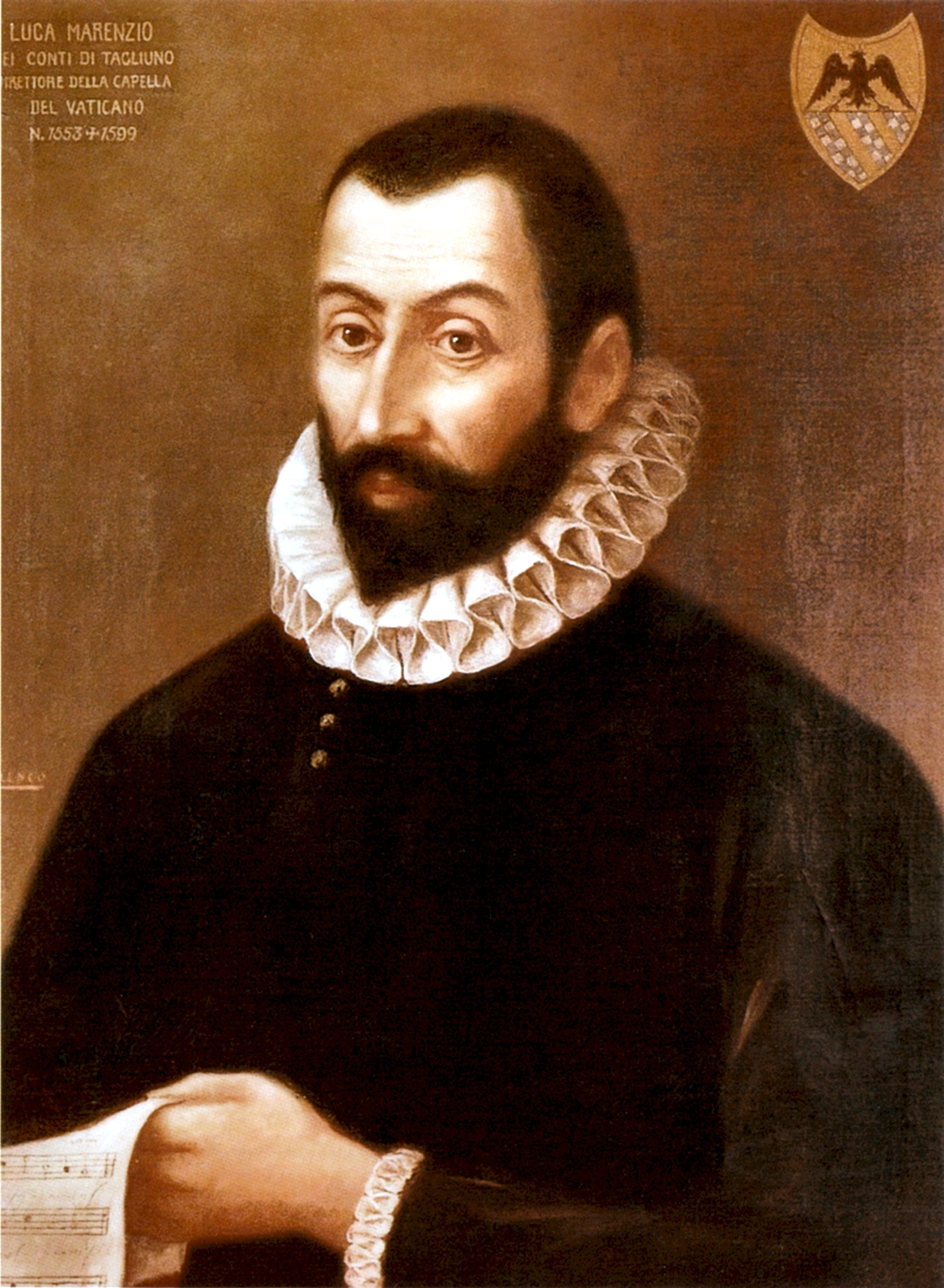 He served in courts of many notables – first, Cardinal Cristoforo Madruzzo; then, for a long time, Cardinal Luigi d’Este, son of Ercole II d'Este, Duke of Modena and Ferrara; then Cardinal Cinzio Aldobrandini, nephew of Pope Clement VIII; and finally, Ferdinando I de' Medici, the Grand Duke of Tuscany. You can read more about Marenzio here. He was one of the finest madrigalists of his time; listen, for example, to this madrigal for four voices, Madonna, sua mercé, performed by the Mirandola Ensemble
He served in courts of many notables – first, Cardinal Cristoforo Madruzzo; then, for a long time, Cardinal Luigi d’Este, son of Ercole II d'Este, Duke of Modena and Ferrara; then Cardinal Cinzio Aldobrandini, nephew of Pope Clement VIII; and finally, Ferdinando I de' Medici, the Grand Duke of Tuscany. You can read more about Marenzio here. He was one of the finest madrigalists of his time; listen, for example, to this madrigal for four voices, Madonna, sua mercé, performed by the Mirandola Ensemble
Another Italian composer, Baldassare Galuppi, was also born on October 18th but a century and a half later, in 1706. During his lifetime he was famous for comic operas, which he wrote to the librettos by Carlo Goldoni. A Venetian, he spent time in European capitals, Vienna, St. Petersburg and London. One of his piano sonatas (no. 5 in C Major), which is often played in music schools, was made famous by Arturo Benedetti Michelangeli. He also wrote a fine mass, Messa di San Marco. Here’s the section Qui sedes ad dexteram Patris (Thou who sits at the right hand of the Father) performed by the Vocal Concert Dresden.
Finally, a round date: Georg Solti was born as György Stern into a Hungarian Jewish family on October 21st of 1912, 110 years ago, in Buda. One of the greatest symphonic and opera conductors of the 20th century, he led the Chicago Symphony from 1967 to 1991. Even though we have many samples of his art in our library, we’ve never written about him at length. We’ll do it soon, in the meantime, here’s Solti conducting Liszt: Le Preludes, in the 1992 live recoding from Salzburg, with the Chicago Symphony.
Permalink
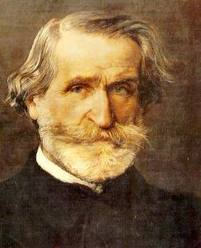 Several eminent pianists were born during the same period, among them the American William Kapell, whose 100th anniversary was on September 20th, (he tragically died in a plane crash in 1953, at just 31 years old); Glenn Gould, who also had a round anniversary (90th), on September 25th. And Vladimir Horowitz was born on October 1st of 1903. We certainly should mention the strings: the violinist Jacques Thibaud (9/27/1880), David Oistrakh (9/30/1908) and the cellist Yo-Yo Ma, who turned 67 on October 7th. We’ll mention just one conductor, Charles Munch, born on September 26th of 1891. We’ve mentioned him several times in the past but failed to write about him at any length; we should correct this lapse - he was one of the best interpreters of French music and led the Boston Symphony for 13 years. And finally, several singers: Anna Netrebko, who’s been in the media quite a bit lately, not because of her singing – she hasn’t been doing much of that, being temporarily banned from the Met and several European stages – but because of her perceived closeness to Vladimir Putin who is conducting a murderous war in Ukraine; she turned 51 on September 18th. And two of our all-time favorite (and very different) tenors, the German Fritz Wunderlich, who excelled in Mozart and Schubert, born on September 26th of 1930, and Luciano Pavarotti, on October 12th of 1935.Permalink
Several eminent pianists were born during the same period, among them the American William Kapell, whose 100th anniversary was on September 20th, (he tragically died in a plane crash in 1953, at just 31 years old); Glenn Gould, who also had a round anniversary (90th), on September 25th. And Vladimir Horowitz was born on October 1st of 1903. We certainly should mention the strings: the violinist Jacques Thibaud (9/27/1880), David Oistrakh (9/30/1908) and the cellist Yo-Yo Ma, who turned 67 on October 7th. We’ll mention just one conductor, Charles Munch, born on September 26th of 1891. We’ve mentioned him several times in the past but failed to write about him at any length; we should correct this lapse - he was one of the best interpreters of French music and led the Boston Symphony for 13 years. And finally, several singers: Anna Netrebko, who’s been in the media quite a bit lately, not because of her singing – she hasn’t been doing much of that, being temporarily banned from the Met and several European stages – but because of her perceived closeness to Vladimir Putin who is conducting a murderous war in Ukraine; she turned 51 on September 18th. And two of our all-time favorite (and very different) tenors, the German Fritz Wunderlich, who excelled in Mozart and Schubert, born on September 26th of 1930, and Luciano Pavarotti, on October 12th of 1935.Permalink
This Week in Classical Music: October 10, 2022. Catching up. For most of the last month we’ve been preoccupied with Arnold Schoenberg and we’re glad we were while he may not have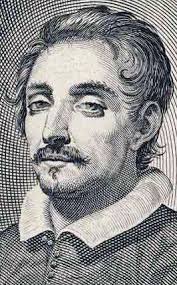 been the greatest creative genius in the history of classical music, few, if any, composers affected it so much and in the process changed the listeners’ perception of what music is and how to listen to it. While we were engaged with Schoenberg and the genesis of atonal music, we missed a lot of interesting dates, so today we’ll look back at the month since Schoenberg’s birthday. Girolamo Frescobaldi, one of the most important composers of keyboard music of the late Renaissance, was born on the same day as Schoenberg but three centuries earlier, on September 13th of 1583. Jean-Philippe Rameau, the great French composer of the Baroque, was born on September 25th of 1683, one hundred years after Frescobaldi. Rameau was famous for his operas, but the ultimate opera composer was, no doubt, Giuseppe Verdi who was born on October 9th of 1813. And Dmitry Shostakovich, one of the most important Russian-Soviet composers was born in St.Petersburg on the same day as Rameau, September 25th, in 1906.
been the greatest creative genius in the history of classical music, few, if any, composers affected it so much and in the process changed the listeners’ perception of what music is and how to listen to it. While we were engaged with Schoenberg and the genesis of atonal music, we missed a lot of interesting dates, so today we’ll look back at the month since Schoenberg’s birthday. Girolamo Frescobaldi, one of the most important composers of keyboard music of the late Renaissance, was born on the same day as Schoenberg but three centuries earlier, on September 13th of 1583. Jean-Philippe Rameau, the great French composer of the Baroque, was born on September 25th of 1683, one hundred years after Frescobaldi. Rameau was famous for his operas, but the ultimate opera composer was, no doubt, Giuseppe Verdi who was born on October 9th of 1813. And Dmitry Shostakovich, one of the most important Russian-Soviet composers was born in St.Petersburg on the same day as Rameau, September 25th, in 1906.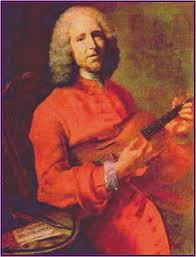
Several more names: Heinrich Schütz of the early Baroque era, considered by many as the most important German composer before Bach, was born on October 8th of 1585. Camille Saint-Saëns was born a day and two and a half centuries later, on October 9th of 1835. And then there were several composer who were very important to their particular nations if not necessarily on the same level as some of the names we’ve just mentioned: Komitas, the national Armenian composer; Mikalojus Čiurlionis, who occupied a similar place in Lithuanian culture; the Polish composer Andrzej Panufnik; and the American, George Gershwin, born on September 26th of 1898. And finally, Alexander von Zemlinsky, who played such an important part in the life of Schoenberg – and also was a very interesting composer -- was born on October 14th of 1871.
This Week in Classical Music: October 2, 2022. Schoenberg, Part IV, In America. This is the fourth, and – we promise – last installment of our notes on the great Austrian composer Arnold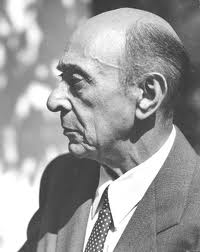 Schoenberg. He arrived in the United States on October 31st of 1933 and spent the first year in Boston. He probably would’ve stayed longer but Boston’s weather made his asthma worse, and in September of 1934 Schoenberg moved to Los Angeles. He wrote to his friend, the conductor Fritz Stiedry, who was then working in the Soviet Union: "We are going to California for the climate and because it is cheaper (sic!)". He eventually settled in Brentwood and lived there for the rest of his life. To support himself, he gave private lessons (Oscar Levant was one of his students), but soon was invited to lecture at the University of Southern California. In 1936 he was made a professor at the UCLA. Otto Klemperer, who emigrated from Germany in 1933, was at the time the music director of the Los Angeles Philharmonic. He performed several of his pieces (to very good reviews) and offered Schoenberg to guest-conduct a concert. That didn’t go too well, and after another attempt (and scathing reviews) Schoenberg gave up on the LA Philharmonic, whose musicians were openly hostile to him and his music. Klemperer, who left for the East Coast in 1936 was one of many eminent German refugees living around LA. Many of them settled in the Pacific Palisades, not far from Brentwood. One of their meeting places was Villa Aurora, the house of the writer Lion Feuchtwanger. Here are some of the German refugees living in Pacific Palisades at the time: writers Tomas Mann and his brother Heinrich, Franz Werfel and Alfred Döblin; the playwright Bertolt Brecht; philosophers Theodor Adorno, Ludwig Marcuse and Max Horkheimer; Schoenberg’s pupil composer Hanns Eisler; F. W. Murnau, the filmmaker and Albert Einstein. Schoenberg knew most of them but was not necessarily friendly with all. He developed a difficult relationship with Tomas Mann who wrote Doctor Faustus, a book about the fictitious German composer Adrian Leverkühn who invents a new musical technique, a 12-tone system. Schoenberg was outraged, accusing Mann of “stealing” from him. Mann, who did talk to Schoenberg about his music, was helped mostly by Adorno. Schoenberg’s relationship with Adorno was also strained as he felt that the latter didn’t quite understand the creative process behind his method. Here is an interesting quote from Schoenberg himself on the way he composed: “All I want to do is to express my thought and get the most possible content in the least possible space.... I write what I feel in my heart... “
Schoenberg. He arrived in the United States on October 31st of 1933 and spent the first year in Boston. He probably would’ve stayed longer but Boston’s weather made his asthma worse, and in September of 1934 Schoenberg moved to Los Angeles. He wrote to his friend, the conductor Fritz Stiedry, who was then working in the Soviet Union: "We are going to California for the climate and because it is cheaper (sic!)". He eventually settled in Brentwood and lived there for the rest of his life. To support himself, he gave private lessons (Oscar Levant was one of his students), but soon was invited to lecture at the University of Southern California. In 1936 he was made a professor at the UCLA. Otto Klemperer, who emigrated from Germany in 1933, was at the time the music director of the Los Angeles Philharmonic. He performed several of his pieces (to very good reviews) and offered Schoenberg to guest-conduct a concert. That didn’t go too well, and after another attempt (and scathing reviews) Schoenberg gave up on the LA Philharmonic, whose musicians were openly hostile to him and his music. Klemperer, who left for the East Coast in 1936 was one of many eminent German refugees living around LA. Many of them settled in the Pacific Palisades, not far from Brentwood. One of their meeting places was Villa Aurora, the house of the writer Lion Feuchtwanger. Here are some of the German refugees living in Pacific Palisades at the time: writers Tomas Mann and his brother Heinrich, Franz Werfel and Alfred Döblin; the playwright Bertolt Brecht; philosophers Theodor Adorno, Ludwig Marcuse and Max Horkheimer; Schoenberg’s pupil composer Hanns Eisler; F. W. Murnau, the filmmaker and Albert Einstein. Schoenberg knew most of them but was not necessarily friendly with all. He developed a difficult relationship with Tomas Mann who wrote Doctor Faustus, a book about the fictitious German composer Adrian Leverkühn who invents a new musical technique, a 12-tone system. Schoenberg was outraged, accusing Mann of “stealing” from him. Mann, who did talk to Schoenberg about his music, was helped mostly by Adorno. Schoenberg’s relationship with Adorno was also strained as he felt that the latter didn’t quite understand the creative process behind his method. Here is an interesting quote from Schoenberg himself on the way he composed: “All I want to do is to express my thought and get the most possible content in the least possible space.... I write what I feel in my heart... “
On the other hand, he became close with Hanns Eisler, who became quite successful writing film music. Eisler worshiped Schoenberg and tried to help him financially, with Schoenberg often refusing the offers. (Eisler, a life-long Marxist, was one of the targets of the House Committee on Un-American Activities investigation. He had to leave the US in 1948, settled in East Germany and composed the national anthem of the country).
Even though Schoenberg lived in America for the last 18 years of his life, he never became quite comfortable there and often thought of emigrating to Europe. That didn’t happen. In 1944 he was diagnosed with diabetes; his health was deteriorating, and he had to give up his UCLA professorship. He was 70 but had to support himself, as his pension was too small, so he reverted to giving private lessons and occasional lectures. In 1946 he had a heart attack which almost killed him, but he lived another five years, mostly in seclusion. Schoenberg died on July 13th of 1951.
During the American period of his life, Schoenberg composed several important works, among them two concertos, one for the violin (“unplayable” in Heifetz’s opinion) and one for the piano; one of the few tonal works of the period, Kol Nidre, for chorus and orchestra; and A Survivor from Warsaw, dedicated to survivals of the Holocaust. Here’s Kol Nidre; Riccardo Muti conducts the Chicago Symphony Orchestra and Chorus.Permalink